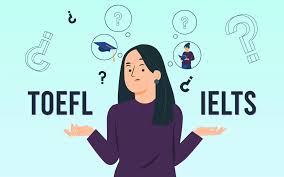10:41 PM IELTS Writing Task 1: Visual Data Mastery Tactics | ||||||||||

Why IELTS Writing Task 1 Demands PrecisionThe IELTS Writing Task 1 measures your ability to summarize and compare visual data in clear, academic English. Unlike Task 2 (opinion-based essays), this task is all about objectivity, structure, and detail—not personal views. Whether you're dealing with a bar chart, process diagram, or pie graph, the examiner wants to see if you can:
Scoring high means more than understanding the graph—it means explaining it with clarity and structure. You’ll find full walkthroughs and templates in the official IELTS prep system. Task 1 Overview: What to Expect
Scoring is based on:
The IELTS writing scoring criteria guide includes rubrics, model band 9 responses, and feedback maps for practice. High-Scoring Structure for Writing Task 1Paragraph 1: Introduction
Paragraph 2: Overview (Key Features Only)
This paragraph drives Band 7+ scores. Learn to craft perfect overviews using the templates in the IELTS academic writing module. Paragraphs 3–4: Detailed Comparisons
Follow the “Highlight → Compare → Support” framework taught in the advanced writing tools section. Top Visual Types and How to Tackle Them1. Bar Charts / Line Graphs
2. Pie Charts
3. Tables
4. Maps
Visual vocabulary lists for maps and diagrams are available in the IELTS writing strategy hub. 5. Process Diagrams
This is one of the trickiest question types, so full examples and templates are included in the visual mastery kit. Common Mistakes in Task 1—and How to Fix Them❌ Copying the Question Prompt✅ Fix: Paraphrase using synonyms and changed sentence structure. ❌ Including Opinions or Interpretations✅ Fix: Stick to factual summary only. No “I think” or subjective adjectives like “good,” “important,” etc. ❌ Overloading With Data✅ Fix: Select key figures that support your overview. Don’t list every number. ❌ Weak Vocabulary✅ Fix: Use precise academic words:
Build your vocabulary bank using the task-specific vocabulary sheet in the preparation system. Phrases That Boost Band Scores
You’ll find these built into the writing simulator templates in the IELTS writing task resource center. Practice & Score Recovery Strategy
This strategy is laid out inside the visual writing booster module—part of the full academic IELTS and TOEFL preparation suite. Conclusion: Clarity Wins in Visual WritingIn IELTS Writing Task 1, you don’t need to be a statistician—you need to be a clear communicator. The right structure, vocabulary, and attention to trends will unlock a Band 7+. Access walkthroughs, sample responses, and smart correction loops inside the IELTS visual writing mastery platform. | ||||||||||
|
|
| Total comments: 0 | |